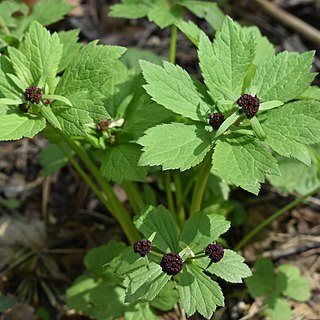A herb. It keeps growing from year to year. It grows 20-50 cm high. The rootstocks are oblique. There is one bud at the end and this produces 5-6 leaves and a flowering stem. The leaves are at the base. The outer leaves are smaller and on leaf stalks 4-7 cm long. The inner 3-4 are much larger and on longer leaf stalks. The leaves are divided into finger like segments. They have lobes and teeth. The flowers are purple-red.

